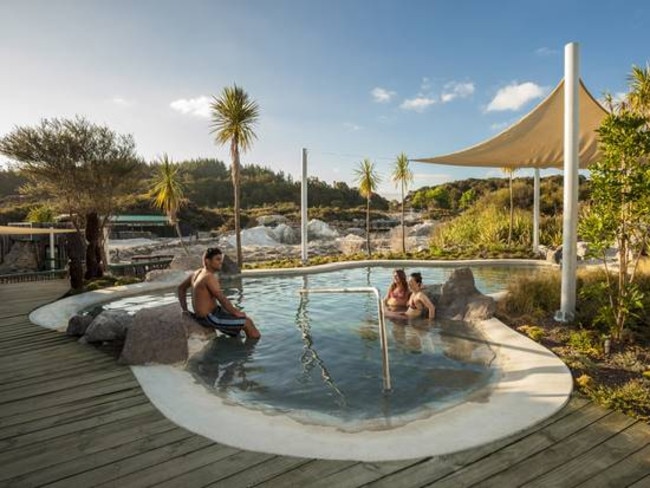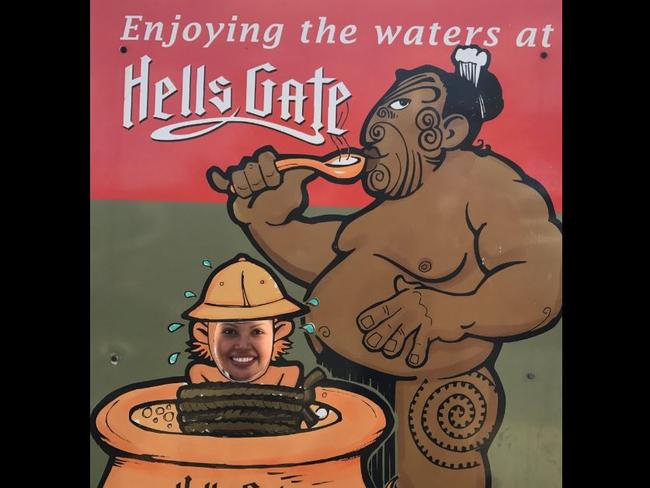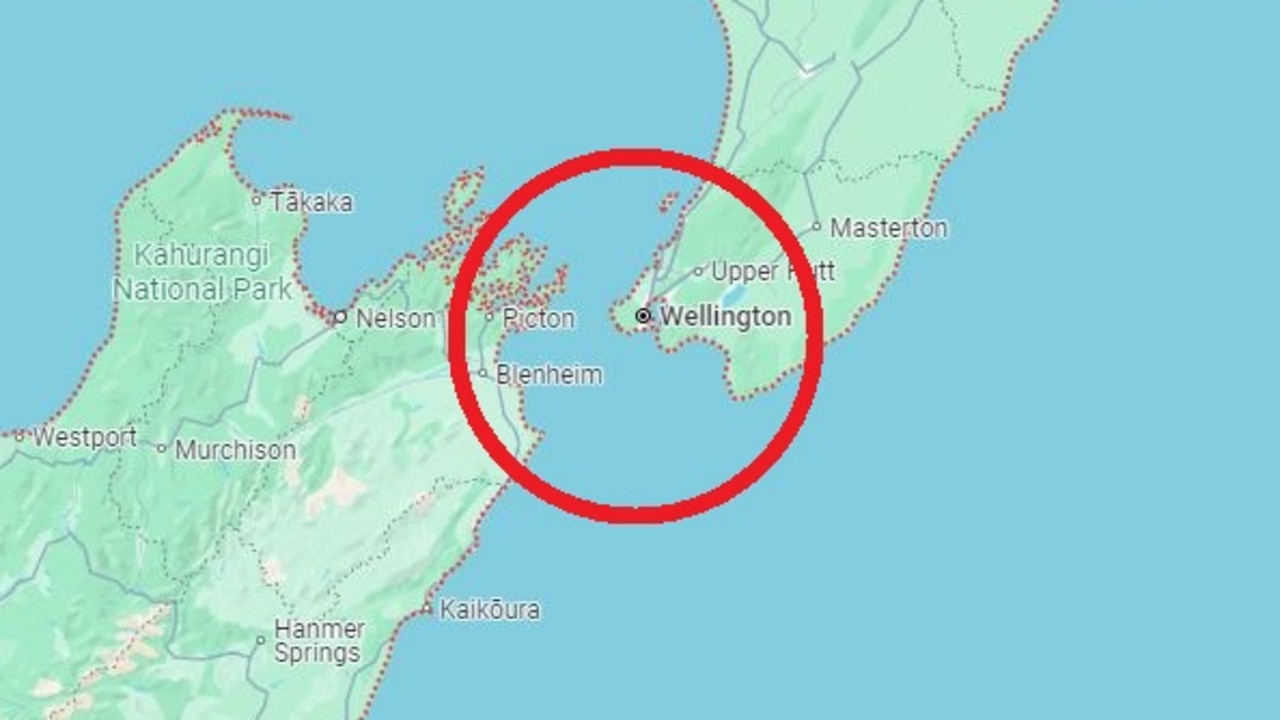The sign that sparked outrage
FOR 18 years, tourists have posed next to this tongue-in-cheek sign at a popular destination in New Zealand, until a single complaint led to its removal.
MAORI leaders in Rotorua are welcoming a decision to remove a tongue-in-cheek sign at a top tourist attraction that has been labelled a “grotesque racial stereotype”.
The sign at Hell’s Gate geothermal park, mud bath and spa shows a tubby, tattooed MÄori man eating from a cooking pot containing a PÄkehÄ (a white New Zealander) tied up in rope with the face cut out for photos.
Te Arawa elder and respected educationalist Sir Toby Curtis said the sign sounded gruesome and supported its removal by the park following a complaint this week.
He planned to find out what had happened and, if necessary, call a meeting of the people to hear what they have to say.
For at least 18 years, tourists have been posing for photos through the sign until this week when MÄori blogger Moata Tamaira saw a photo of a friend’s child pop up in her Facebook feed.
“Everyone else was all ‘ha’ but it made me feel gross. Am I alone in thinking this is just a grotesque racial stereotype played for laughs and that it’s actually horribly offensive?,” she asked this week on Twitter.
“I’m sending them a wee email,” said Tamaira.
Roana Bennett, who runs the Te Taumata o NgÄti Whakaue education and wellbeing trust in Rotorua, said the sign was the sort of thing seen 50 years ago.

“This is the hub of MÄori tourism. There is so much richness in MÄori culture and natural humour. We don’t need it. That is not how we want to portray ourselves. Good on the park for responding the way they have,” she said.
Destination Rotorua chief executive Michelle Tempur said that while she was sure no offence was intended, it was pleasing to see Hell’s Gate responding quickly to remove the sign.
Operations manager Paul Rayner said he ordered the sign be taken down following the complaint, the first he knew of in 18 years of working at Hell’s Gate.
“We are MÄori owned and operated. That is the last thing we want to do … we don’t want to cause offence to anybody,” said Rayner.

Tamaira’s post drew support for her view that the sign was offensive.
Callum MacEwan said: “It is wrong on so many levels. I guess it was a poor attempt at humour.”
And from Fey Hag: “Seems we still have a lot of growing up to do if anyone thinks this is appropriate.”
“Cripes”, said natural history buff Michael Dickinson.
NgÄti Rangiteaorere iwi, which owns Hell’s Gate, did not respond to a request for comment.
MÄori have been bathing in the geothermal muds and sulphur waters of Tikitere for more than 700 years and Europeans for more than 150 years. The spot got the name “Hellsgate” from Irish playwright Sir George Bernard Shaw.
A second sign alongside the MÄori sign, showing a devil with a three-pronged fork, is still up.

This story originally appeared on the NZ Herald and was republished with permission.



